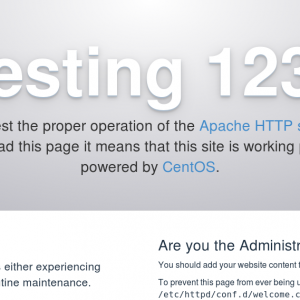
A Guide to SSL/TLS Certificates
SSL stands for Secure Socket Layer. An SSL Certificate is a security certificate that encrypts communication between a client, such as a browser, and a server hence safeguarding the data…
Read More »
How to harden Apache Web Server on Centos 7
Apache is the most popular web server used in the internet. It is ideal for most situations and allows flexibility for shared environments through the use of .htaccess file. This…
Read More »
How to Install Premium SSL on Hostname in CWP on Apache
Sometimes, you may choose to install premium SSL such as Comodo Positive SSL or Rapid SSL on your hostname instead of the free Let’s Encrypt SSL provided by CWP. Below…
Read More »
9 things to do after buying a VPS
There are some few steps that you should take to setup your VPS to survive the Internets viciousness and to make it more convenient for your use. Below are some…
Read More »
Basic Server Security Configuration
When you setup a new server, it takes just 5 hours before it starts receiving attacks. A developer’s primary concerns revolve around getting their application to run, getting some component…
Read More »
How Your WordPress Site Gets Hacked
Having your website hacked is one experience you wouldn’t like yet many people have had to deal with this one or more times. WordPress is the most popular content management…
Read More »
OpenSSL
OpenSSL is an open source implementation of Secure Socket Layer(SSL) and Transport Layer Security for web authentication. The core library is written in C programming language and it offers cryptographic…
Read More »
Data Encryption : PGP and GPG
Data that can be read and understood without any special measures is called plaintext. The process of disguising plaintext to hide its meaning and substance is called encryption. When a…
Read More »
How to Disable SELinux in CentOS
Security-Enhanced Linux is a Linux kernel security module that provides a mechanism for supporting access control security policies, including mandatory access controls. It offers a means of executing some security…
Read More »
Opening and Closing Ports in CentOS 6 and 7 using IPtables
Setting up a good firewall is an essential step in ensuring the security of your system. IPtables is the default firewall used on CentOS. It is a command-line utility that…
Read More »